Coffee freshness matters. Not just for the flavor, but for the body and the health benefits that you receive.
Coffee oxidizes naturally, but it does so at an accelerated rate. When it oxidizes, health benefits tend to float away.
Chlorogenic acid gets dried up, B vitamins diminish in terms of your RDA percentage, and it just makes the whole experience less nutritional and less enjoyable.
Stale coffee can often take on the same flavor as burnt coffee if you aren’t careful about it.
To prevent that, let’s talk about storage, which is arguably the most critical thing you will do as a coffee connoisseur to keep it fresh.
You need to know how to store coffee beans the right way if you want them to stay flavorful.
Depending on the material of the container and the freshness of your beans, you can extend their life for more than enough time to grind and enjoy them.
We’ll go over container materials, storing them in the fridge and freezer, how humidity affects your coffee, and so much more.
The Best Containers To Store Coffee Beans
You can’t just put those coffee beans in a plastic zippered bag and call it a day—you need solid containers that are as airtight as possible to lock in that flavor and protect your coffee beans from oxidation.
Not only that, but you want something to complement your little coffee station in your kitchen, as well as your brushed stainless steel espresso machine and coffee pot, right?
You can get something aesthetic with a good seal on it, but do your best to make sure it’s not made of plastic, but instead some of the materials listed below.
Aluminum
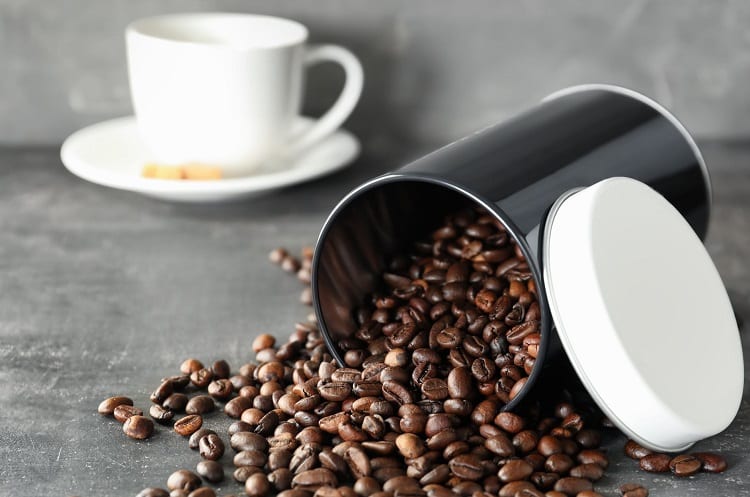
Aluminum is sturdy, dents but doesn’t break or snap, and doesn’t hold onto the flavor of your coffee beans or grounds.
It’s not going to quit on you, and the temperature control is fairly decent (if it’s thick enough).
Aluminum containers, much like aluminum cans, will garner condensation if they’re near extreme sources of heat or if the contents are hot and it’s cold on the outside of the container.
Just don’t put freshly roasted coffee beans in here, and keep it away from the stove/coffee maker to avoid humidity.
Ceramic
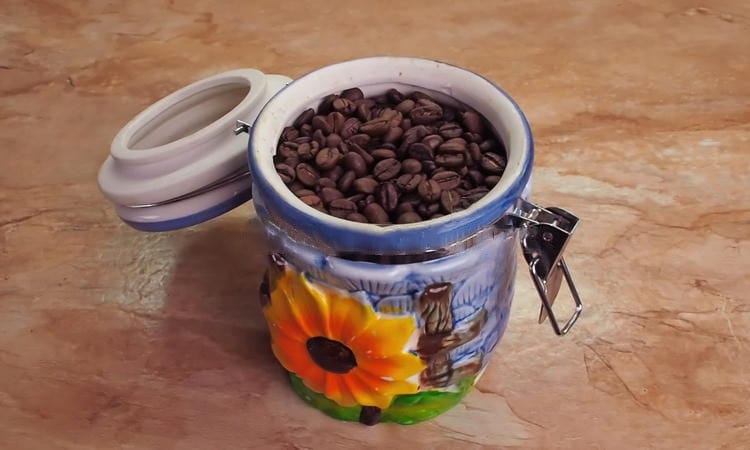
Ceramic containers on their own don’t let air pass through. It’s a solid, non-porous material that usually has a rubber gasket to lock the air in.
Ceramic containers come in a variety of sizes, so there shouldn’t be too much room left for oxygen to ruin your coffee beans.
Ceramic is more fragile than aluminum or steel, so it will take a bit more precaution during cleaning.
Don’t store coffee beans in a canister that is still hot. Let it air dry during cleaning to prevent humidity and moisture from sapping the caffeine out of your coffee beans.
Steel
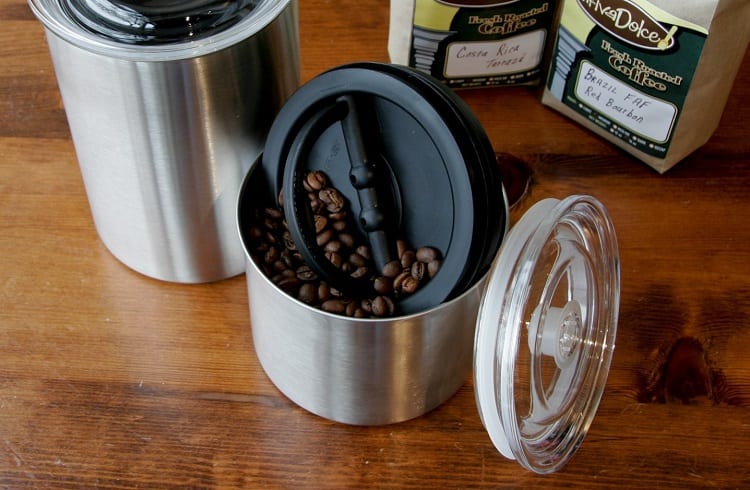
Much like aluminum, these are just built tough and usually include some form of an airtight seal that keeps oxidation at bay.
The thing is, steel containers are pricier than aluminum.
They’re also usually bigger (based on researching products online), meaning that even when you put the lid on, there’s still going to be some air trapped inside that’s oxidizing the beans.
Steel doesn’t hold onto moisture though, so you would need this to be in a ridiculously hot and humid environment for any condensation to creep on through. That’s a big advantage over aluminum.
Should I Store Coffee Beans In The Fridge?
No, you shouldn’t store coffee beans in the fridge. It’s cold enough to help extend the shelf life, but it’s not going to uphold the quality.
Even if you’re buying bulk bags of coffee beans (5 lbs or more), I would still recommend storing them dry.
It’s safe to assume that you’re going to go through that in about three months, and these beans should be shelf-stable for about one to two years before you can really notice their quality going down.
It’s not necessary to store them in the fridge.
If you live in an area that gets extremely chilly during the winter, such as New England or the upper midwest of the United States, then you’re going to encounter ice-cold air in your home.
Even if this is the case, you can still store your coffee beans dry since the entire temperature of your home will be the exact same.
How Long Can You Store Coffee Beans?
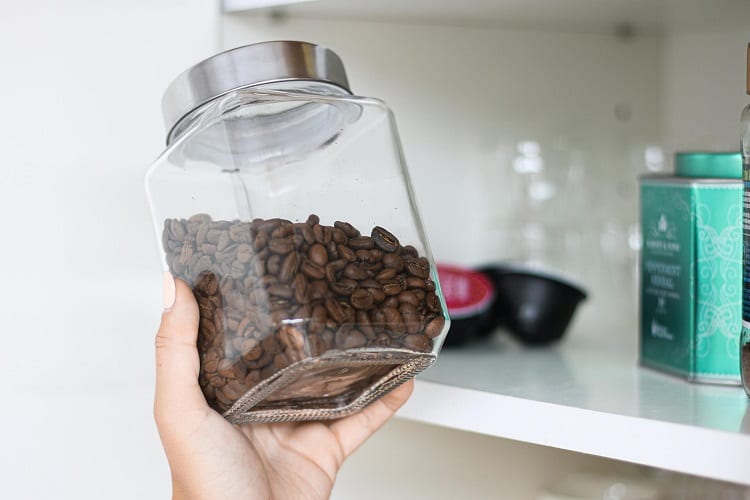
This depends on who you ask, so let’s break it down to give you each answer and why they’re important.
For the best possible flavor, one to three months is the longest that you should store coffee beans.
Don’t buy in bulk, just buy enough to sustain for one to three months, and you won’t lose out on any flavor.
The roast date will reflect a much later time, but the sooner you use coffee beans, the better.
To not lose any flavor—meaning that it’s not at peak, but it’s not lacking in flavor at all—you should brew no later than six months.
After that point, even with a healthy 12% moisture content, coffee beans will just start to decay.
It’s still food, and no matter how much it’s been roasted, it’s susceptible to decay and eventual rot.
Most roast dates are usually one year after packaging (since coffee beans often need time to settle and release gases for the first five days after roasting).
One year after roasting is the longest you should go because, after that point, they’re going to taste fairly flat.
You can absolutely grind after one year if you’d like. If the beans don’t smell funky and there are no visible signs of rot, go ahead and grind.
If anything is amiss, you’ll be able to tell by looking at the grounds. Just know that brewing these after a year is going to diminish the flavor quite a bit.
Last but not least, if your beans are approaching their one-year roast date, you can grind them in a big batch to get an extra one or two weeks of life out of them.
This little trick works best if you have a proper coffee canister with a rubber gasket seal to keep everything fresh.
Where Can I Store A Coffee Canister?
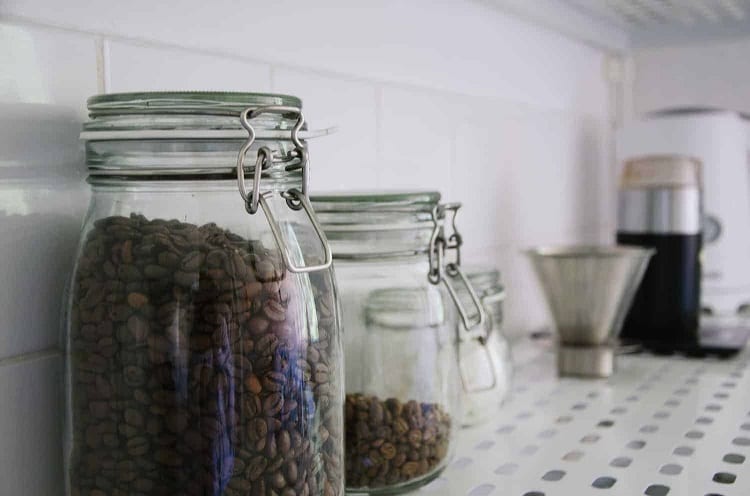
Coffee canisters can be stored on the countertop in your kitchen if you have enough space in between your coffee maker and your stove/oven.
The kitchen is the most used part of any home, so that coffee pot and oven will create steam and condensation on nearby objects, especially in the winter months.
If you can’t store them on the countertop, then find a pantry that’s directly away from space heaters or vents for your home’s central air conditioning.
If your countertop gets hot and you’re constantly using your oven, this is the best place to store your canisters.
Under no circumstances should you ever store your coffee beans at a high point in the room, such as the cabinets above your stove.
That’s like signing a death certificate for the flavor profile of your coffee. Humidity from steam will rise and seep its way into the canister.
The lower you can store your canister, the better. If that means having it on the first floor even if your kitchen is on the second, then so be it.
Canisters can go into a pantry, but I recommend putting in a dehumidifier and/or small air conditioner or fan inside as well.
You want to keep the temperature between 60°F and 72°F to preserve flavor.
It prevents humidity but also doesn’t make the beans so cold that the humidity drops below the ideal level of 12% in your beans.
If you have to choose, colder beans will retain flavor and freshness better than warm beans.
Should Coffee Be Stored In The Freezer?
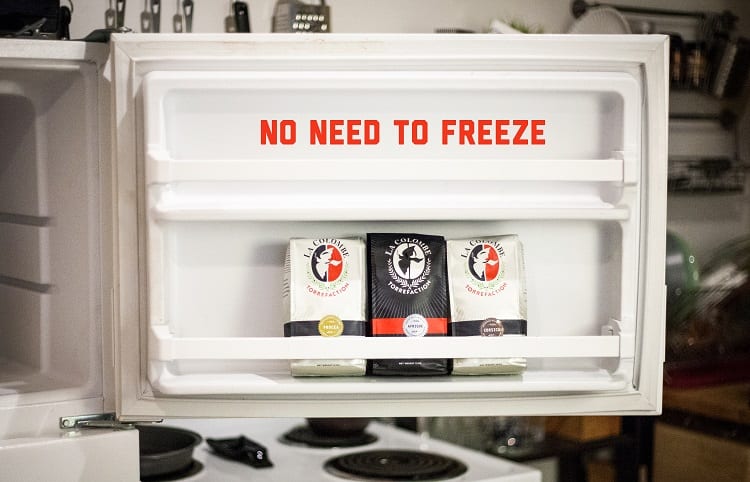
No, you shouldn’t store coffee in the freezer.
If you’re using pre-ground coffee, then you should keep it in the original canister on the countertop next to your brewer (without keeping them so close that steam or condensation will creep its way inside the canister).
When you store pre-ground coffee in the freezer, it doesn’t take long to thaw out, and you can even use it frozen, but you’re eliminating a lot of caffeine.
Caffeine, as well as B vitamins, are water-soluble.
Once you pull the grounds out of the freezer, condensation is going to take over and you begin to extract the grinds from the coffee before the brewing process.
For the best direct flavor and brew strength, you need to be able to extract everything straight from the coffee grounds with hot water.
Can You Freeze Whole Coffee Beans?
Sure, you absolutely can.
This will extend the shelf life of roasted coffee beans, which are usually about one year, up to three years.
This comes at a cost though, because your flavor is going to take a hit, and when you defrost your beans, it’s going to expedite the molding process.
While your beans might be dry while they’re in the freezer, if you store them properly, they’re not going to be dry when you pull them back out.
The second the warm, room temperature air hits those beans, they’re going to start sapping moisture from the air.
Condensation will blanket those coffee beans, and then it’s also going to jam up your grinder.
You can’t grind frozen coffee beans, so during the entire thawing period, they’re going to build up that level of moisture all along with the shell.
In truth, you should just buy fewer coffee beans at a time and use the canister storage method in a cool, dry place instead.
What Does Humidity Do To Coffee?
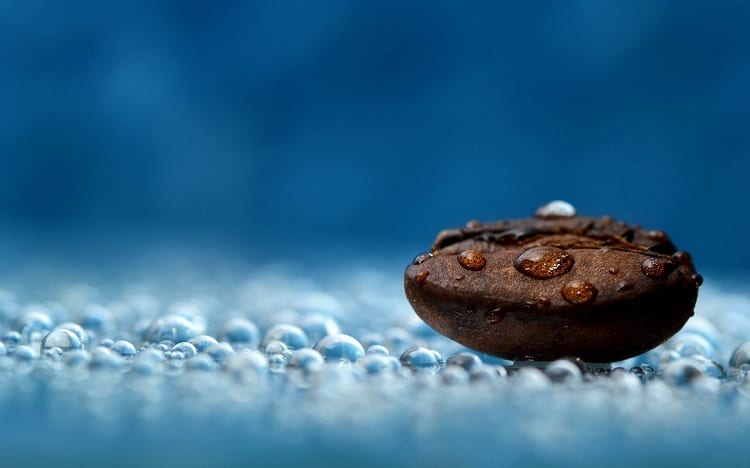
It’s going to sound crazy, but coffee beans and fresh lumber have something in common—they both require roughly the same humidity level to stay fresh without rotting.
That magic number is 12% humidity. You can’t have coffee beans be 100% dry, but you don’t want them to be too moist, either.
Humidity saps flavor from coffee and can diminish the caffeine content, as well as B vitamins.
Caffeine and B vitamins are all water-soluble, so moisture will remove some of these health benefits from your coffee.
With that, the flavor profile is fractured.
It’s like you can taste most of the tones of coffee, but with those nutrients gone, there are distinct elements of the normal flavor of coffee that are missing.
It tastes incomplete.
Green coffee beans have the highest moisture content, resting somewhere between 50 and 55%.
Because they are packaged very well, there’s usually no need to be worried so long as you plan on roasting or brewing them right after opening them.
Moisture content can be controlled with proper storage containers and the overall humidity in your home but will suffer if you use your fridge or freezer to store coffee beans.
Condensation will saturate your coffee beans, so keep them in a cool (but not cold) dry area.
What Temperature To Store Coffee In?
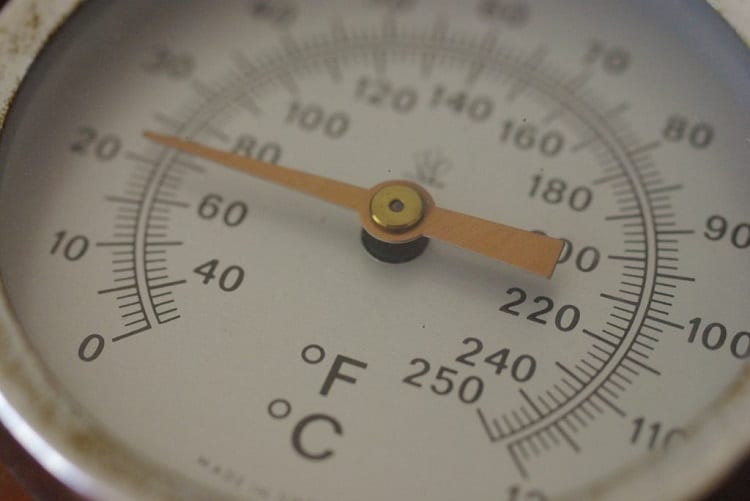
Roasted coffee beans should be kept in a cool environment, and as we mentioned before, away from humidity and excessively dry spaces.
A cool temperature is considered anywhere from 60° F to 72° F.
Over that, you will run into problems with humidity, and the heat can cause any moisture within the coffee beans to begin molding or creating mildew.
Storage temperature is also key to retaining flavor.
That storage temperature needs to be stable, meaning once the coffee beans reach this temperature in the appropriate space, they should remain there until they’re ready to be used.
Tips To Minimize Coffee Waste
Wasting coffee is a crying shame.
It’s one of the best fertilizers on the planet, and when it goes into landfills, it creates methane gas, which is 20x worse than carbon emissions from motor vehicles.
Let’s reduce coffee waste with these tips.
Reuse
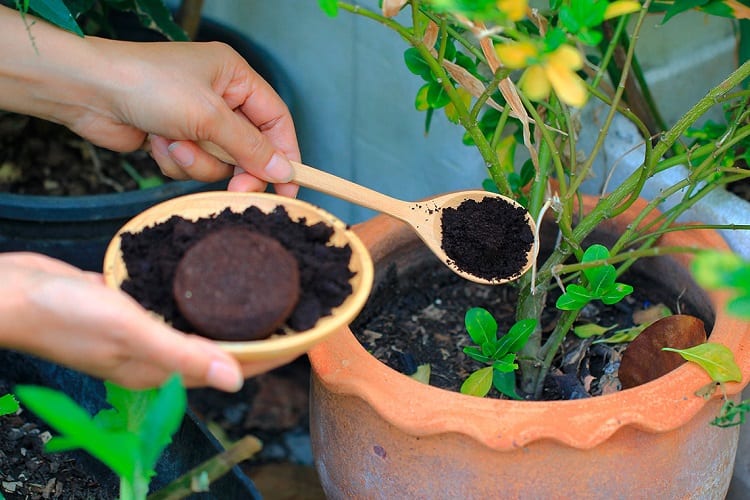
You can save money by reusing coffee grounds before you find a proper way to dispose of them.
You should do this either immediately (if you plan on storing the coffee in the fridge for iced coffee later, this is a good way to do it), or you should put the coffee grounds in the oven or on a pan outside to dry them out.
Coffee grounds can grow mold or mildew if you don’t dry them out properly.
This can save you around $100 per year on coffee grounds, and then you can use one of these other methods to dispose of the grounds in a safe, eco-friendly way.
Turn Into Compost
You can do this when the grounds are wet or when they’re dry, but adding them to the soil in your garden or your own backyard is fantastic.
The acidity helps the soil and can help with specific plants like blueberry bushes. You don’t have to do anything special to them.
Even if you don’t garden, you can add these grounds to your house plants or just sprinkle them on dirt patches of your lawn.
Brew One At A Time
The reason that single-shot machines gained popularity in the last decade, such as Keurig or Nespresso, is because people don’t like dumping half a pot of coffee down the drain.
It’s wasteful, it’s expensive, and making the right amount for what you need is just so much easier. It takes less time.
Whether you’re using a French press, drip machine, or a pour-over coffee machine, change your coffee and water volume for what you want.
As a little tip to remember, coffee grounds and water should have a 1:18 ratio, respectively.
For every 10 g of coffee grounds that you use, you need 180 ml of water (180 g equivalent). Do this accordingly moving forward to reduce waste.
Use It In Cooking
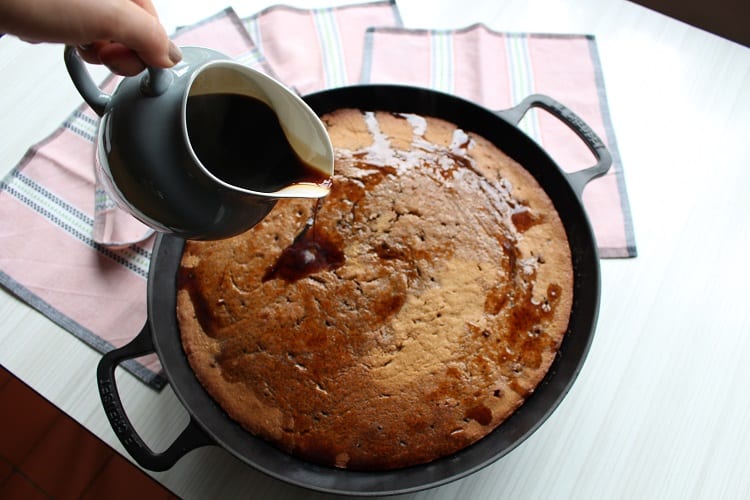
Made too much coffee?
It happens to the best of us. Whether you made a half-pot and realized you only needed a single cup, or you were on autopilot and just made the whole thing, you can still reuse what’s left.
Use the coffee in cooking, for baking make mixed alcoholic drinks—coffee is versatile, so put any spare black coffee to good use.
Store it, Brew it, Enjoy it
Store your coffee beans in an acceptable space, and consider the freezer option if it comes to it.
At the end of the day, the goal is to prevent oxidation of your coffee beans to retain flavor and nutrition.
Understand that the darker the roast, the harder it’s going to be to keep your beans fresh.
They’ve likely already gone through a second crack, meaning more gasses have escaped. That’s good for flavor but bad for shelf life.
If you want to seriously enjoy the freshest coffee you can, consider roasting your own coffee beans, then storing them properly, and grinding them yourself to be used within fifteen minutes—that’s how you get the freshest flavor.